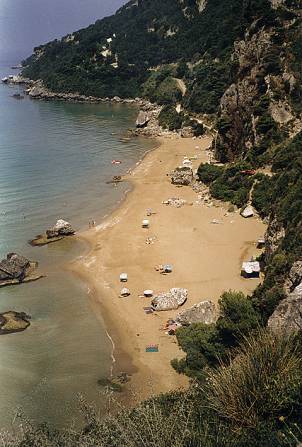 online
online |
poor man's reference-sorting without eudora »» |
07/15 |
 online
online |
create LaTeX bibliography for publisher »» |
06/14 |
 online
online |
online music alarm clock »» |
12/13 |
 online
online |
feynman »» |
10/13 |
 online
online |
Mathematica2fortran »» |
09/13 |
 online
online |
inherent structure »» |
05/11 |
 online
online |
SCF: PNIPAM brush (Appendix D of Macromolecules 2011) »» |
04/11 |
 matlab
matlab |
SCF: Classical planar brush (Appendix E of Macromolecules 2011) »» |
03/11 |
 online
online |
strip and clean souled LaTeX file »» |
03/11 |
 online
online |
Adsorption of Core-Shell Nanoparticles at Liquid-Liquid Interfaces) »»
collaboration ETH, Zurich |
03/11 |
 online
online |
Z1 for polymer + crosslinker + nanoparticle systems (LAMMPS) »»
collaboration NWU, Madrid |
12/10 |
 online
online |
NEBD actin filaments »»
collaboration A.R. Bausch |
10/10 |
 online
online |
SCF planar brush + protein, AFM forces, adsorption isotherms, density profiles »»
collaboration A. Halperin, E.B. Zhulina |
06/10 |
 CPC
CPC |
PoissonBracket.nb »»
Calculations for nonequilibrium thermodynamics including test of the Jacobi identity. Local formulation of the Jacobi identity |
05/10 |
 online
online |
From dendrimers to dendronized polymers and forests: Scaling theory and its limitations »»
collaboration A. Halperin |
12/09 |
 online
online |
ELJ model in spherical confinement »»
collaboration A.-M. Herrmansson |
12/09 |
 online
online |
Spin-chain with variable bond length »»
collaboration Y. Rabin |
12/09 |
 online
online |
Reduced units, reference units, LJu, JCu etc. »» |
07/08 |
 online
online |
WLC in confined geometry »» |
01/08 |
 offline
offline |
China game solver »» |
01/08 |
 CPC
CPC |
Symbolic computation of the phoretic acceleration of convex particles suspended in a non-uniform gas »»
calculating analytic expressions for forces and torques onto an arbitrarily shaped convex tracer (aerosol) particle small compared to the mean free path of the surrounding nonequilibrium gas. The package \Phoretic allows to compute analytical (and also numerical) expressions for forces and torques stemming from elastic and diffusive scattering processes parameterized by an accommodation coefficient. The method is based on calculating half sphere integral tensors of arbitrary rank and on integrating forces and torques acting on surface elements. The surrounding gas is completely specified by an arbitrarily shaped velocity distribution function. Accordingly, \Phoretic requires two inputs: A particle (surface) geometry and a velocity distribution function ... |
04/06 |
 CPC
CPC |
Shortest multiple disconnected paths »»
Algorithm which returns a number of entanglements for a given configuration of polymeric system in 2 or 3 dimensions. Primitive paths for dense polymeric melts made of linear chains (a multiple disconnected path) are extracted, where each primitive path is defined as a path connecting the (space-fixed) ends of a polymer under the constraint of excluded volume between primitive paths of different chains, such that the multiple disconnected path fulfills a minimization criterion. The algorithm uses geometrical operations and does not only provide a - model independent - efficient approximate solution to this challenging problem, but releases several shortcomings of alternate approaches. |
01/05 |
 CPC
CPC |
Efficient hybrid algorithm for the dynamic creation of semiflexible polymer solutions, brushes, melts and glasses »»
Algorithm for the creation and relaxation of large, dense or diluted homogeneous many particle systems made of wormlike, finite extendable, semiflexible multibead chains and - optionally - solvent particles, which repulse each other. The key feature is its efficiency, its output has been proven to serve as an excellent basis for any subsequent off-lattice computer simulation. |
08/00 |
 CPC
CPC |
Algorithm to optimize classification trees »»
The problem is solved finding best classification trees for a specific subject to one of two groups. Initially, a set of features for a (sufficient) large number of representative subjects from both groups must be sampled by the user. A good tree is expected to be found if there exist schemes of behaviour, or even complex correlations within the input information. The algorithm allows to take into account boundary conditions, to fit the practical purpose of the classification tree. |
01/02 |
 CPC
CPC |
Symbolic test of the Jacobi identity for given generalized 'Poisson' bracket »»
Algorithm which allows to test the Jacobi identity for a given generalized 'Poisson' bracket. Nonequilibrium thermodynamics requires that the reversible part of motion of thermodynamically admissible models is described by Poisson brackets satisfying the Jacobi identity, in order to ensure the full time-structure invariance of equations of motion for arbitrary function(al)s on state space. SEE PoissonBracket.nb for a more recent version of this application. |
05/99 |
 code
code |
Recognition and analysis of local structure in polycrystalline configurations »»
Returns information about the local order existing in monoatomar model solids or real materials based on their atomistic configurations. The shape of polyhedra formed by `relevant' neighbors of each atom enter a pattern recognition method to resolve the type of the (usually non-ideal) crystal structure to which atoms surrounded by their relevant neighbors belong: hexagonal close-packed, face-centered cubic or body-centered cubic. Further, this approach allows for the analysis of amorphous solids (icosahedral structure). |
03/99 |
 code
code |
Coarse-grained polymer chains »»
Obtains ratio of spring coefficients XI for the construction of a coarse-grained linear polymer based on its `atomistic' conformation and analyze the finite N effects on the ratio between XI and N^2 (a measure for corrections), ratio between tube diameter and entanglement length, and ratio between coarse-grained and atomistic radii of gyration. |
01/04 |
 CPC
CPC |
Angular coefficients of the relativistic one-electron hyperfine structure parameters »»
Calculates the angular coefficients alpha_{nl}^{k_sk_l} and beta_{nl}^{k_sk_l} of the relativistic one-electron hyperfine structure parameters for the case of pure SL-coupling or, alternatively, the case of intermediate coupling. The calculation is based on SL-basis states and, optionally, mixing coefficients of the electronic wave functions of atoms. The derivation of the necessary matrix elements is based on the effective tensor operator formalism. |
08/97 |
 ETH
ETH |
Exercises »» |
02/12 |





